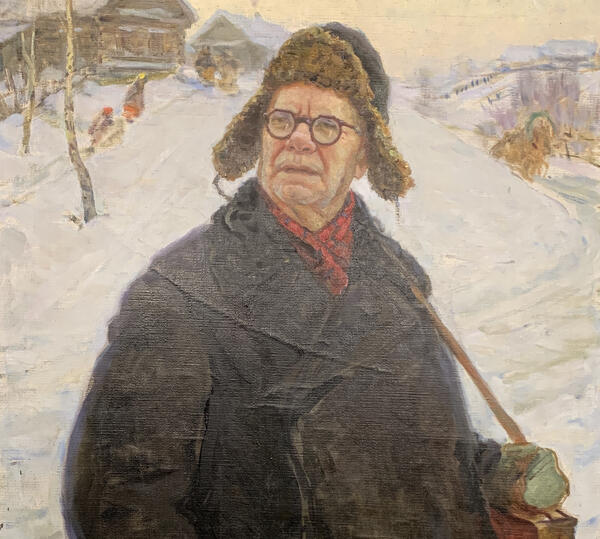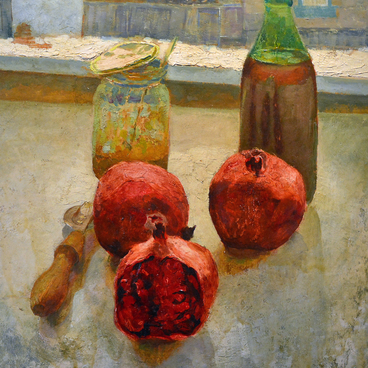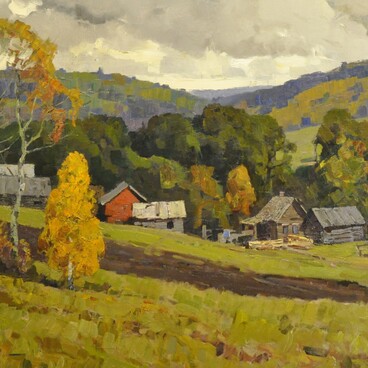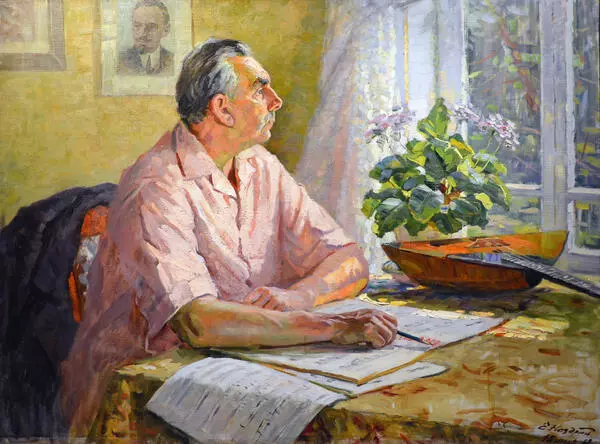Several generations of Mordovian painters were fascinated with the personality of Fedot Vasilyevich Sychkov (1870–1958). Fedot Sychkov was an artist who elevated Mordovian fine arts to a professional status. He had a difficult career path: from working in an icon painting workshop to participating in exhibitions in Europe. Coming from a peasant family, he went to Saint Petersburg, graduated from the Drawing School of the Imperial Society for the Encouragement of Arts and the Higher Art School at the Imperial Academy of Arts. After the revolutionary events of 1917, the artist moved to the village of Kochelayevo, where he was born and grew up.
Fedot Sychkov was inspired by his native land. The artist painted portraits of his fellow villagers, views of the village and its surroundings. Folk holidays and weekdays, peasant and rural culture are his main themes. The characters on his canvases are full of life, the color palettes are bright, juicy, and optimistic.
In addition, Fedot Sychkov designed posters for revolutionary holidays, and served as a delegate from Mordovian artists at congresses. The painter enjoyed well-deserved respect: many artists sought to portray Fedot Sychkov; for them he was an indisputable authority.
The presented portrait of Sychkov was created thanks to a happy coincidence. In the 1950s, the promising artist Evgeny Nozdrin moved to Saransk. Since childhood, he admired reproductions of Sychkov’s paintings and had long planned to paint his portrait. One day Sychkov went into the young artist’s studio, saw sketches for his portrait and agreed to pose.
Nozdrin depicted the artist against the background of a snow-covered village street; he is in harmony with the winter landscape. A hat with earflaps, mittens and a warm coat protect the artist from the cold. Despite the frost, he has stepped outside with a sketchbook in search of a plot.
At the time of creating the picture Fedot Sychkov was an elderly man. His age affected him, his health did not allow him to work as much, and the artist’s wife Lydia Vasilyevna tried to protect him from worries. The young Yevgeny Nozdrin was then struck by the patience and dedication with which the artist posed, and at the same time kept encouraging his younger colleague, whose hands were shaking with excitement.
Subsequently, Evgeny Nozdrin created an entire gallery of portraits of Mordovian cultural figures.
Fedot Sychkov was inspired by his native land. The artist painted portraits of his fellow villagers, views of the village and its surroundings. Folk holidays and weekdays, peasant and rural culture are his main themes. The characters on his canvases are full of life, the color palettes are bright, juicy, and optimistic.
In addition, Fedot Sychkov designed posters for revolutionary holidays, and served as a delegate from Mordovian artists at congresses. The painter enjoyed well-deserved respect: many artists sought to portray Fedot Sychkov; for them he was an indisputable authority.
The presented portrait of Sychkov was created thanks to a happy coincidence. In the 1950s, the promising artist Evgeny Nozdrin moved to Saransk. Since childhood, he admired reproductions of Sychkov’s paintings and had long planned to paint his portrait. One day Sychkov went into the young artist’s studio, saw sketches for his portrait and agreed to pose.
Nozdrin depicted the artist against the background of a snow-covered village street; he is in harmony with the winter landscape. A hat with earflaps, mittens and a warm coat protect the artist from the cold. Despite the frost, he has stepped outside with a sketchbook in search of a plot.
At the time of creating the picture Fedot Sychkov was an elderly man. His age affected him, his health did not allow him to work as much, and the artist’s wife Lydia Vasilyevna tried to protect him from worries. The young Yevgeny Nozdrin was then struck by the patience and dedication with which the artist posed, and at the same time kept encouraging his younger colleague, whose hands were shaking with excitement.
Subsequently, Evgeny Nozdrin created an entire gallery of portraits of Mordovian cultural figures.





